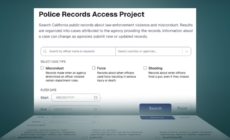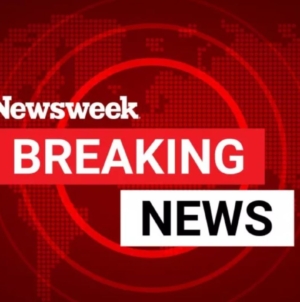-
Nancy Mace Launches Bid For South Carolina Governor - 12 mins ago
-
China standing firm against U.S. demands that it stop buying oil from Russia and Iran - 12 mins ago
-
Plastic crisis highlighted by Lancet ahead of Global Plastics Treaty - 16 mins ago
-
Searchable database on cases of police use of force and misconduct in California opens to the public - 21 mins ago
-
U.S.–Hungarian Ties Deepen as Top Exporters Push Back on EU–U.S. Tariff Pact - 25 mins ago
-
Twins vs. Guardians Highlights | MLB on FOX - 49 mins ago
-
Plane Passenger Asks Mom Flying With Son To Swap Seat—Her Reply Says It All - 52 mins ago
-
What happens when imagination meets emotional attachment to pets - 55 mins ago
-
Ukraine Accused of Covering Up Abuse of Ethnic Minority - 58 mins ago
-
Calls grow for boosting Mono Lake by easing L.A.’s water reliance - about 1 hour ago
Number of Americans Selling Their Home Hits Major Milestone
The imbalance between sellers and buyers in the U.S. housing market has now passed the 500,000 mark, according to the latest data from Redfin, as unsold inventory continues piling up across the country.
Back in May, the real-estate brokerage warned that the number of Americans selling their homes was nearing half a million, the highest on records dating back to 2013. Now that record has been shattered.
In June, there were a total of 1.922 million sellers on the market, up 12.8 percent from a year earlier, facing 1.413 million buyers, down 8.9 percent from a year earlier, according to Redfin. The difference between them is around 509,000.
What’s Behind This Growing Gap?
When historically low mortgage rates during the pandemic spurred a homebuying frenzy across the country, this revealed how significant the nation’s shortage of homes was after years of underbuilding in the aftermath of the subprime mortgage crisis.
While the U.S. is still facing a gap between supply and demand of millions of homes at the national level, there are now more properties for sale on the market than there are buyers. This has a lot more to do with affordability than Americans’ desire for homeownership.
The 30-year fixed-rate mortgage, the most popular home loan in the country, has been hovering between the 6-percent and the 7-percent marks since 2022, and was at 6.72 percent as of July 31, according to Freddie Mac.
While home prices are no longer climbing at the speed that characterized the pandemic years, they are still rising at the national level, and they remain much higher than before 2019. The median sale price of a typical U.S. home was $446,766 in June, according to Redfin, up 1 percent from a year earlier but 44 percent from June 2020.
Getty Images
Other rising costs—including home insurance premiums, homeowners association (HOA) fees, and property taxes—have also been rising in recent years, and continue inching up in many parts of the country.
Buyers pushed to the sidelines by higher costs are being made increasingly cautious by concerns over the future of the U.S. economy, which many experts warned would suffer the impact of White House tariff policies.
At the same time, sellers who were holding on to their homes because of lower monthly payments have now stopped waiting for mortgage rates to come down. Some are forced to sell by life circumstances, others have just waited long enough. In June, there were over 2.1 million homes for sale in the U.S. market, up 14.7 percent from a year earlier.
But, increasingly, they can only sell their homes if they adjust their price expectations and offer buyers hefty discounts. In June, according to Redfin, 21.5 percent of homes sold with a price discount—up 4 percentage points from a year earlier. The number of homes sold above list price, on the other hand, dropped by 4.1 percentage points to 31 percent.
The reason the number of properties on the market in June was higher than the number of sellers was that the latter may be selling more than one home.
It’s a Buyer’s Market. So Why Does It Not Feel Like One?
Redfin defines a buyer’s market—where buyers have the upper hand over sellers—as one where there are over 10 percent more sellers than buyers. In June, sellers outnumbered buyers by 36 percent.
But American homebuyers are struggling to feel like the housing market is in their favor. While they have more options on the market to choose from and are gaining more negotiating power, they are still facing homes that are far more expensive than they were five years ago, and which often come with high property tax bills and home insurance premiums, depending on where they are located.
The shift toward buyers has also been much more significant in states that have seen a huge surge in inventory together with a construction boom—for example, Florida and Texas—than in those where the shortage is still acute—as in the Northeast.
There is also a risk that buyers’ advantage might start disappearing as sellers who cannot get the price they want for their homes take their properties off the market. According to a recent report by Realtor.com, delistings were up by 48 percent nationwide in July compared to a year earlier. For every 100 newly listed homes added to the U.S. market in the same month, 21 were delisted.
Source link































